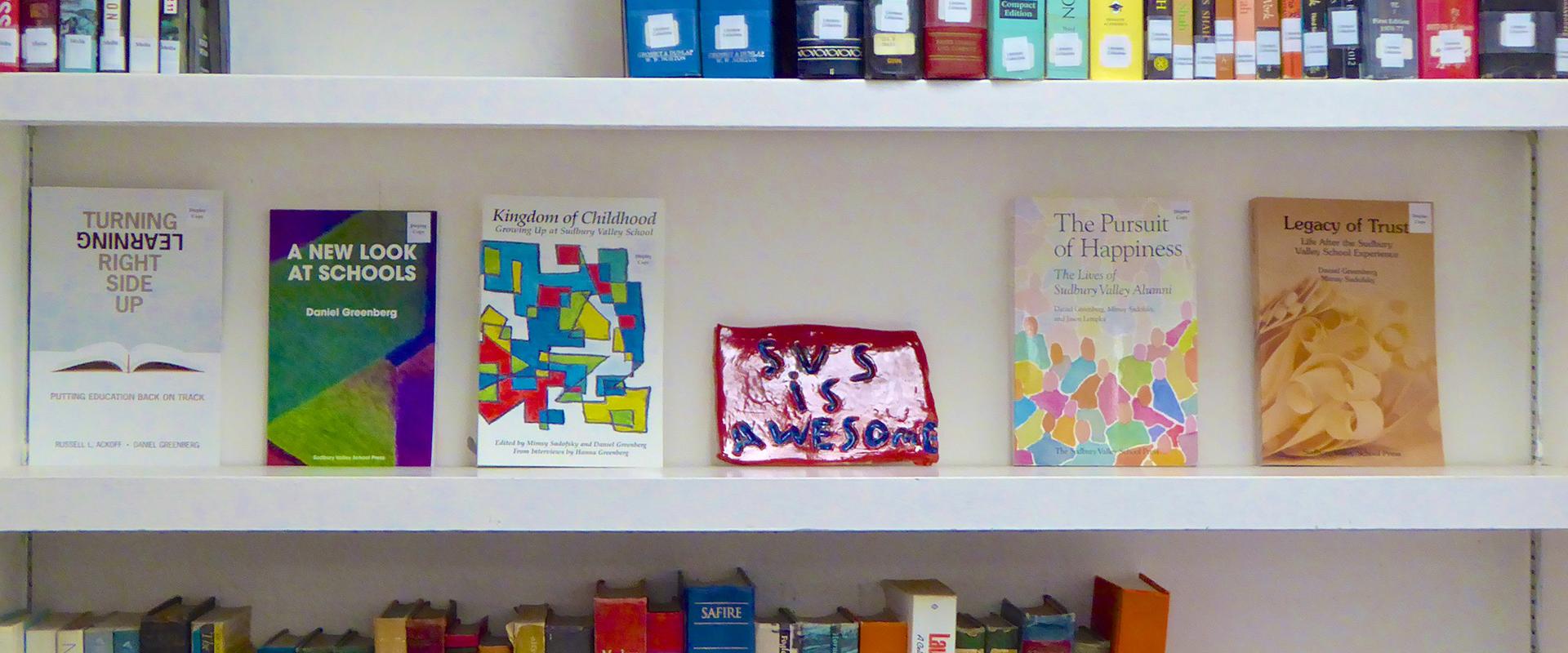Especially at the beginning of the school year, a new student, or somebody who has just not gotten around to it before, might ask about what’s the deal with the books at school. They might want to know if you can borrow them, and how that would work, or where we have books about a certain topic. Or perhaps there will be a new batch of books, and somebody will jokingly say, oh, look another bunch of books nobody may read. And we’ll laugh, and look at them, and eventually some or all of them will be on the shelves, and we all know that we don’t really know if somebody is or is not going to read this that or the other book anytime soon, because, you know, books are free at SVS, just like our students.
Let me explain: first of all, most books at school these days come to us as donations from families, friends, and staff members, so they are free for the school. Then, students are free to take books off the shelves and look at them as they please, and yes, take them home if they want to. It’s good to get them back, but we don’t have a regulated system for borrowing, and I don’t think anybody wishes we had that kind of system either. If we have more than one copy of something we know is popular, we might keep the extra, just in case. All we ask of readers is to put back books by placing them on a shelf horizontally, so we know they have been moved and can put them in their place.
So yes, books at SVS are pretty free-floating entities, easily accessible for all. One thing I personally like a lot about our school is that books are everywhere, and that they are not delegated to a special area designated as a library. That way too, our books are free, and they can come off the shelf and go outside just like that.
But our books are free in yet other ways. Apart from the very broad class of books that I would describe as “books people affiliated with SVS have read or looked at and thought to give to us,” a less random criteria of selection it turns out than it might sound, our books are not part of any classroom reading list, course schedule, or curriculum, even though you might find a good number of them on such lists. Apart from the extremely small number of books we have that are text books originally designed for use in classrooms, our books are books that have been written, first and foremost, for readers to read.
When I was a student, I sometimes used to think of something like this in the middle of a seminar: Studying literature, like I did, can make you feel like books exist primarily to be discussed in a classroom, with a professor, students, and perhaps some other learned people surrounding them; but that is not so – except for books and articles about books, authors write for readers, and anybody can be that reader. I still think it’s thrilling that everybody who picks up a book has the same right to it, and is at the same distance or proximity to whoever wrote it, no matter if they were sitting in a seminar discussing it with other people, or at home alone in their own room with it. It did confuse me sometimes that something I had read waiting for the bus would be the same thing we were talking about with a professor, but in the end that’s something I really like about books, how these worlds within worlds move about on subways, trains, and in airplanes, from bedside tables and kitchen counters to waiting rooms or the beach. And between times! Something might have been written 1 year ago or 100 years ago, and the time in the book might be a present, past, or future, but once you are reading, the time of the book is always now, it’s disorienting and exciting.
Here, I feel some objection rising, a voice saying that you know, you can pick up a book and find that it doesn’t quite seem to be written for you, that there are books with specialized audiences, or archaic vocabulary, or books that, starting with their cover design, try to draw some people in and keep others out, or that you need to be educated to have access to certain kind of books. But I think if you put books on shelves without too much ado about them, people can figure these things out for themselves and try to crack the code of a book or leave it, it’s really up to them. And if googling doesn’t help or appeal, there are certainly a good number of enthusiastic and experienced readers around that are more than happy to talk about books and help decipher reading material of all kinds.
As a school, we don’t try to preselect our students’ reading or access to books. People can read magazines, philosophy, literature on gardening, self-help books, novels, history, sports, architecture and art, science, in short, almost everything. Even if students never open any of these books, or use them for anything else than propping up a laptop, the relationship is friendly, a signal that yes, books are part of a world that is open to thinking, imagining, and discussion, and perhaps a reminder of the fact that we live in a culture that is unthinkable without the written and printed word. This might all seem so basic, but whenever I go to the Strand bookstore in Manhattan and see the table of books that are banned in some place or another in the United States (Harry Potter among them), I see how special it is to have this abundance of books and people in every room, no strings attached.

